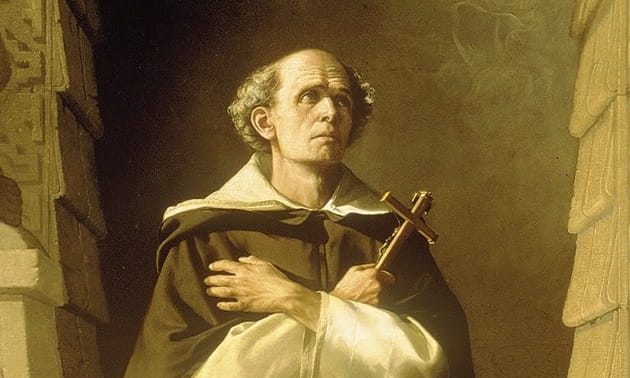Throughout history, there has been a profound interplay between various cultures and spiritual traditions, particularly in the context of colonialism and the plight of indigenous peoples. The Bahá’í Faith, with its emphasis on unity and the essential oneness of humanity, provides an important lens through which to examine the relationship between the Great Black Father—often symbolic of African heritage—and the Indigenous peoples of the Americas. This narrative is one of resilience, interconnectedness, and the quest for justice and spiritual awakening.
From the outset, it is imperative to establish a foundational understanding of the Bahá’í principles that guide this discourse. Central to Bahá’í teachings is the belief in the oneness of mankind. This doctrine asserts that all humans, regardless of their backgrounds, are united in a single family. To comprehend the historical dynamics between the Great Black Father and the Indigenous peoples, one must first embrace this perspective of unity.
When we refer to the “Great Black Father,” we evoke an image representing the African diaspora, the struggles against oppression, and the profound spiritual heritage that has emerged from these experiences. This figure is not merely a historical icon but an embodiment of resilience against systemic injustices. The narrative of African peoples—marked by tales of survival, resistance, and cultural richness—serves to resonate deeply with the struggles of Indigenous communities, who have faced their own tumultuous histories marked by colonization and genocide.
Both populations have endured the historical traumas of dislocation and cultural erasure. In the case of Africa, the transatlantic slave trade wrought irrevocable damage, severing communities and dispersing families across continents. Likewise, the Indigenous peoples of the Americas faced colonial endeavors that sought to dismantle their civilizations and obliterate their cultures. The Bahá’í Faith calls upon adherents to reflect on these shared histories, fostering a spirit of empathy that transcends temporal and spatial boundaries.
The Bahá’í teachings encourage reflection on the lessons of justice derived from these histories. Justice, as articulated by Bahá’u’lláh, is considered the most conspicuous and pivotal of all virtues. As Bahá’ís engage with the historical narratives of marginalized communities, they are implored to act as advocates for justice, recognizing the intertwined destinies of the Great Black Father and Indigenous peoples.
This advocacy is not merely an abstract notion but a call to tangible action. The struggles for social justice, equality, and rights of both African descendants and Indigenous populations illustrate the necessity of collective efforts toward healing and reconciliation. This journey towards equity aligns seamlessly with Bahá’í principles, which emphasize the importance of creating a just and unified society. Such efforts may include community engagement, education, and the promotion of intercultural dialogues designed to foster a deeper understanding and solidarity among differing groups.
As we delve deeper into the implications of these teachings, we encounter the metaphor of the “great tree,” which symbolizes the interconnectedness of all people. Just as various branches extend from a robust trunk, so too do diverse cultures flourish from shared roots of humanity. It is vital to recognize that although individuals may exist on different branches—representing varied ethnicities and experiences—they all contribute to the robustness of the tree’s structure. The Great Black Father and Indigenous peoples exemplify branches that may, at first glance, seem distinct but are intrinsically connected through shared struggles and aspirations.
The Bahá’í perspective provides a unique appeal in historical discourse, as it seeks to elevate discussions about race and identity beyond the confines of divisive rhetoric. Instead, it posits a narrative that embraces diversity while simultaneously promoting unity. By emphasizing their commonalities, Bahá’í teachings serve as a catalyst for understanding that transcends mere tolerance. They encourage a celebration of difference as an enriching component of the human experience.
Furthermore, the nature of spiritual teachings within the Bahá’í Faith urges a re-evaluation of historical narratives. The stories of the Great Black Father and Indigenous peoples are replete with lessons that speak to resilience, survival, and the eternal human spirit. Bahá’í principles compel adherents to consider these narratives not just as historical accounts but as profound expressions of spiritual truths—truths that reflect the struggle for dignity, respect, and recognition.
This notion extends to an understanding of the hard-fought battles for civil rights, land reclamation, and the resurrection of cultural identities. Each victory resonated not only within the communities involved but across the broader spectrum of humanity. The triumphs of one group invariably echoed the aspirations of another, underlining the essential Bahá’í message that all are uplifted when justice prevails.
In conclusion, the interplay between the Great Black Father and the Indigenous peoples of the Americas presents an opportunity to reflect on the Bahá’í teachings regarding the oneness of humanity and the pursuit of justice. Through a metaphoric lens, one can appreciate the complexity of shared histories while acknowledging the need for solidarity in addressing the remnants of oppression. Such contemplations not only enrich the individual understanding of these topics within the Bahá’í framework but also serve as a potent reminder that historical narratives, when approached with humility and insight, possess the capacity to inspire profound collective transformation.
Ultimately, the teachings of Bahá’u’lláh implore humanity to transcend historical grievances and to engage in acts of love and justice. It is through this lens that one can gather strength—a call to action for unity and compassion that can effectively bridge the gaps created by centuries of turmoil, building a future where the legacies of both the Great Black Father and Indigenous peoples are honored and revered.
